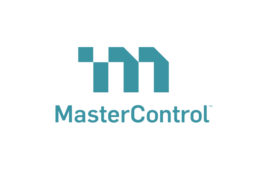
[Image from EtQ]
21 CFR Part 820 contains a huge number of “shall” requirements for medical device manufacturers. While it may seem impossible to meet so many requirements, a well-constructed Quality Management System (QMS) provides an excellent starting point and framework for compliance.
So, how can manufacturers use the QMS to demonstrate compliance with these regulations, and which tools are most important to getting the job done?
Today’s post looks at just that, focusing on seven specific capabilities to leverage in the QMS.
1. Document Control
The U.S. Food and Drug Administration (FDA) wants to see that you do what you say and say what you do. What are regulators looking for here?
- Each document should clearly show when it was issued, revision history and who made any changes.
- Old copies should be recalled when you update documents, such as when testing methods and Standard Operating Procedures (SOPs) are revised.
- Paper records need to be tightly controlled to prevent use of untracked notebooks.
- Controls must prevent unauthorized people from making changes or deleting documents.
In this sense, an automated QMS with Document Control tools is a big advantage, providing a centralized location for tracking key documents and managing permissions. If you can get this one key process down, you’ll save yourself a lot of trouble when it comes to compliance.
2. Employee Training
The FDA requires manufacturers to establish and document Employee Training so that people have the knowledge and skills to do their jobs effectively. An integrated QMS can help document compliance with employee training requirements, allowing you to link training to areas like:
- Complaints and defects: Training must include information on known defects, so you want to be able to update your training programs based on knowledge of current risks.
- Corrective and preventive action (CAPA): Employee training is a common remedial action for CAPAs. An integrated QMS allows you to link the corrective action record to training assignments.
- Work instructions: Every time you update a Standard Operating Procedure (SOP), that needs to be reflected in employee training procedures.
3. Audit Management
According to FDA regulations, medical device manufacturers must conduct periodic quality audits to determine the effectiveness of the quality system. Audit Management tools within the QMS can help you demonstrate compliance with these requirements, allowing you to:
- Define your audit schedule and schedule automatic follow-ups to make sure you stay on track.
- Conduct mobile audits and immediately upload findings to the QMS, instead of having to manually enter the results.
- Launch corrective actions linked to audit findings, laying down a complete trail of how you’re proactively identifying and correcting issues.
4. Reporting
Effective quality reporting goes a long way towards demonstrating compliance with FDA requirements. With so many companies still relying on outdated spreadsheet reporting, being able to access data on demand makes a much better impression on inspectors. Centralized Reporting tools provide evidence for a range of quality activities, from nonconforming product management to effectiveness of Supplier Quality Management activities.
More importantly, it helps you pull together the big picture of quality and compliance in your organization to better protect patient safety. Integrated Reporting tools in a robust QMS also help you share results with leaders and engage them in the quality process—a key focus of 21 CFR Part 280.
5. Supplier Management
The regulations contain several requirements related to purchasing controls and supplier management. That’s why it’s so important that any QMS covers Supplier Quality Management, helping you maintain records of:
- Suppliers and subcontractor evaluation processes and metrics.
- Compliance history and corrective action record related to individual suppliers.
- Compliance certificates and other supplier-related documents.
- Product receipt and shipping for better traceability.
6. Corrective and Preventive Action (CAPA)
Having effective Corrective and Preventive Action (CAPA) processes and tools is an essential part of FDA compliance. Tools in the QMS that will help you comply with these requirements include:
- Linking nonconforming product records to CAPA investigations.
- Evaluating possible procedural changes to prevent recurrence and connecting them to documents and training requirements.
- Performing a risk assessment as a final step to ensure CAPA effectiveness.
7. Risk Management
Leveraging Risk Management tools in the QMS can help improve quality and safety of devices while also showing a proactive approach to compliance. Applying risk assessments to different parts of the QMS process helps you make better decisions, in areas such as:
- Filtering CAPAs by risk for more effective prioritization.
- Making sourcing decisions based on supplier risk ratings.
- Adding design controls based on Failure Modes and Effects Analysis (FMEA) results.
- Prioritizing complaints according to risk.
Risk assessments help record the why behind important decisions. Ultimately, a company that’s serious about risk management shows compliance not just with the letter of the law, but also the intent behind it. That type of authentic commitment is something that will shine through in everything you do, both to regulators and consumers in general.
The opinions expressed in this blog post are the author’s only and do not necessarily reflect those of MedicalDesignandOutsourcing.com or its employees.


